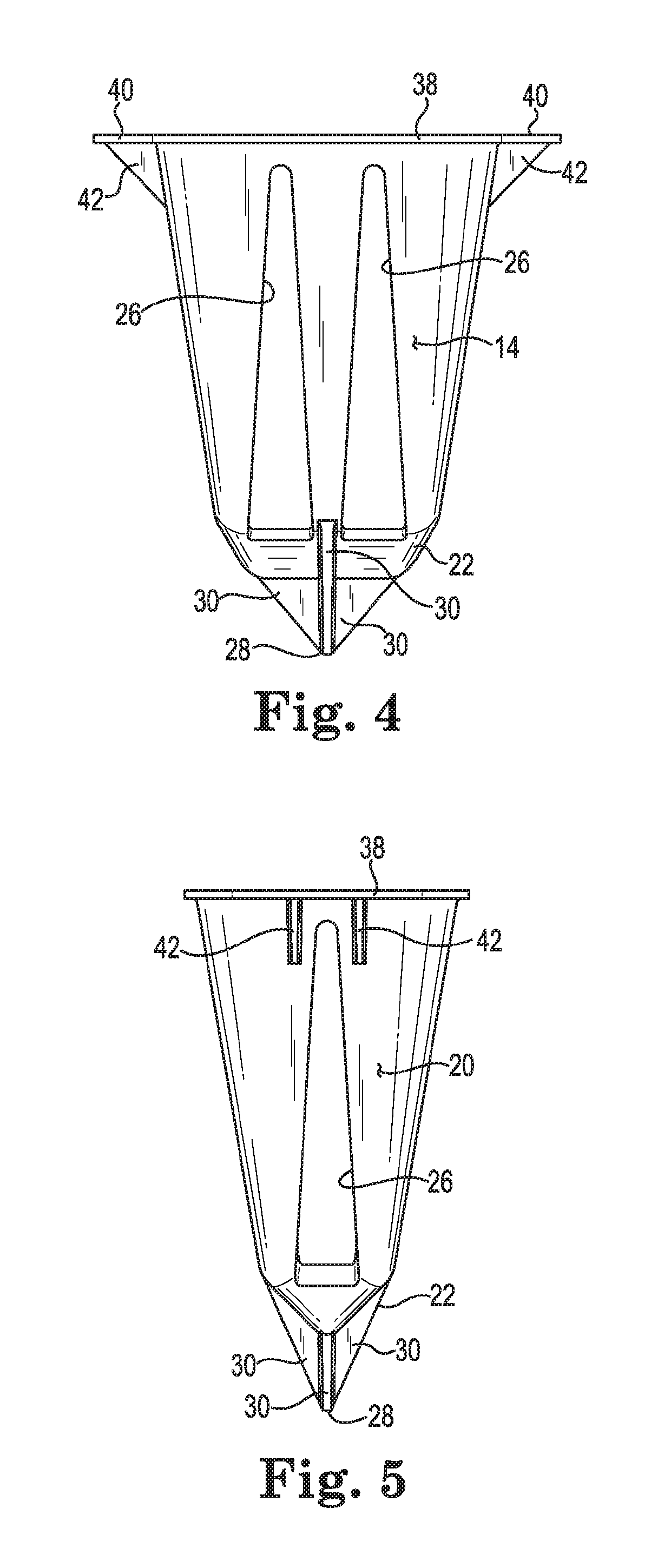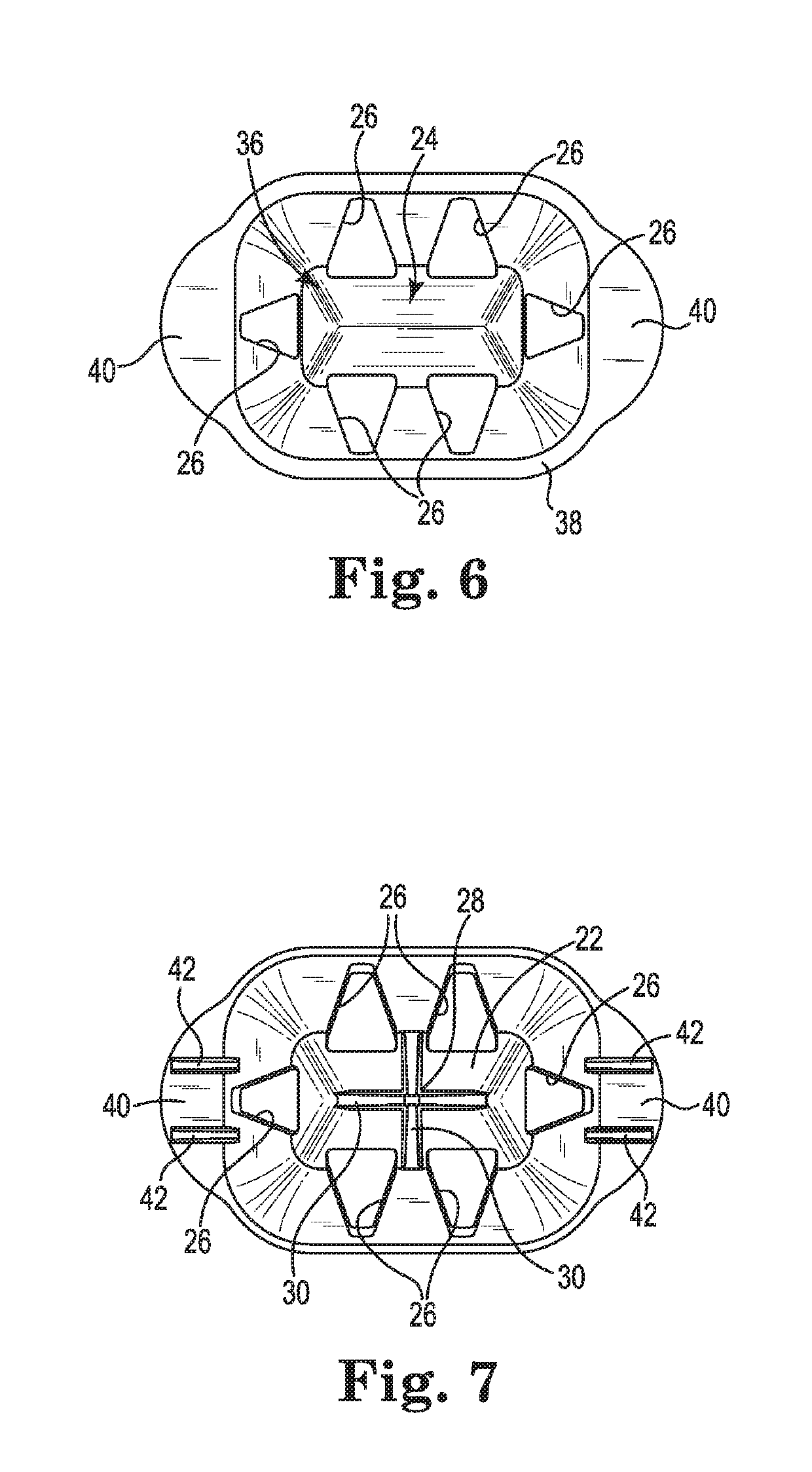Biodegradable horticulture container
a horticulture container and biodegradable technology, applied in the field of pots, can solve the problems of destroying the root system of plants, destroying plastic pots, and creating a huge volume of discarded plastic pots, and achieve the effect of reducing the volume of containing materials
- Summary
- Abstract
- Description
- Claims
- Application Information
AI Technical Summary
Benefits of technology
Problems solved by technology
Method used
Image
Examples
Embodiment Construction
[0058]The present invention relates to the containment of plants and seedlings as such plants or seedlings are grown, transported, displayed and planted. Preferably, containers of the present invention are comprised of biodegradable materials that have the advantage of being formed into containers with various features, such as by an injection molding process, but that can be buried within the soil along with a plant's roots. Such containers allow for plant or seedling transplanting without having to separate the container from the plant's root system. More preferably, biodegradable plastics utilized in accordance with the present invention have properties such that the plastic can be injection molded (forcing molten plastic into a prefabricated mold by pressure) and yet provide a stable structural container that will last in accordance with predetermined set needs, which needs may include environmental aspects, timing aspects and decompositional aspects. By utilizing injection mold...
PUM
 Login to View More
Login to View More Abstract
Description
Claims
Application Information
 Login to View More
Login to View More - R&D
- Intellectual Property
- Life Sciences
- Materials
- Tech Scout
- Unparalleled Data Quality
- Higher Quality Content
- 60% Fewer Hallucinations
Browse by: Latest US Patents, China's latest patents, Technical Efficacy Thesaurus, Application Domain, Technology Topic, Popular Technical Reports.
© 2025 PatSnap. All rights reserved.Legal|Privacy policy|Modern Slavery Act Transparency Statement|Sitemap|About US| Contact US: help@patsnap.com



